Removal of High-Risk Hazardous Gases Using Porous Materials
A special issue of Applied Sciences (ISSN 2076-3417). This special issue belongs to the section "Chemical and Molecular Sciences".
Deadline for manuscript submissions: 20 March 2025 | Viewed by 34
Special Issue Editor
Interests: carbon fiber; activated carbon; activated carbon fiber; adsorption; pitch; harmful gases
Special Issues, Collections and Topics in MDPI journals
Special Issue Information
Dear Colleagues,
High-risk hazardous gases, such as hydrogen fluoride (HF), hydrogen chloride (HCl), sulfur dioxide (SO₂), ammonia (NH₃), and volatile organic compounds (VOCs), pose severe threats to human health and the environment. These gases, commonly released during industrial processes and chemical incidents, can lead to respiratory diseases and environmental degradation and contribute to global climate change. Porous materials, including activated carbons, metal–organic frameworks (MOFs), zeolites, and mesoporous materials, offer promising solutions for the efficient capture, neutralization, and decomposition of these hazardous gases due to their high surface area, tunable pore structures, and chemical stability. This Special Issue aims to highlight the latest advancements in the development and application of porous materials for the adsorption, catalytic conversion, and removal of high-risk gases.
Dr. Byong Chol Bai
Guest Editor
Manuscript Submission Information
Manuscripts should be submitted online at www.mdpi.com by registering and logging in to this website. Once you are registered, click here to go to the submission form. Manuscripts can be submitted until the deadline. All submissions that pass pre-check are peer-reviewed. Accepted papers will be published continuously in the journal (as soon as accepted) and will be listed together on the special issue website. Research articles, review articles as well as short communications are invited. For planned papers, a title and short abstract (about 100 words) can be sent to the Editorial Office for announcement on this website.
Submitted manuscripts should not have been published previously, nor be under consideration for publication elsewhere (except conference proceedings papers). All manuscripts are thoroughly refereed through a single-blind peer-review process. A guide for authors and other relevant information for submission of manuscripts is available on the Instructions for Authors page. Applied Sciences is an international peer-reviewed open access semimonthly journal published by MDPI.
Please visit the Instructions for Authors page before submitting a manuscript. The Article Processing Charge (APC) for publication in this open access journal is 2400 CHF (Swiss Francs). Submitted papers should be well formatted and use good English. Authors may use MDPI's English editing service prior to publication or during author revisions.
Keywords
- hazardous gas removal
- porous materials
- adsorption and catalysis
- gas capture technologies
- advanced materials for gas adsorption
- air purification solutions
- chemical risk management
Benefits of Publishing in a Special Issue
- Ease of navigation: Grouping papers by topic helps scholars navigate broad scope journals more efficiently.
- Greater discoverability: Special Issues support the reach and impact of scientific research. Articles in Special Issues are more discoverable and cited more frequently.
- Expansion of research network: Special Issues facilitate connections among authors, fostering scientific collaborations.
- External promotion: Articles in Special Issues are often promoted through the journal's social media, increasing their visibility.
- e-Book format: Special Issues with more than 10 articles can be published as dedicated e-books, ensuring wide and rapid dissemination.
Further information on MDPI's Special Issue polices can be found here.





